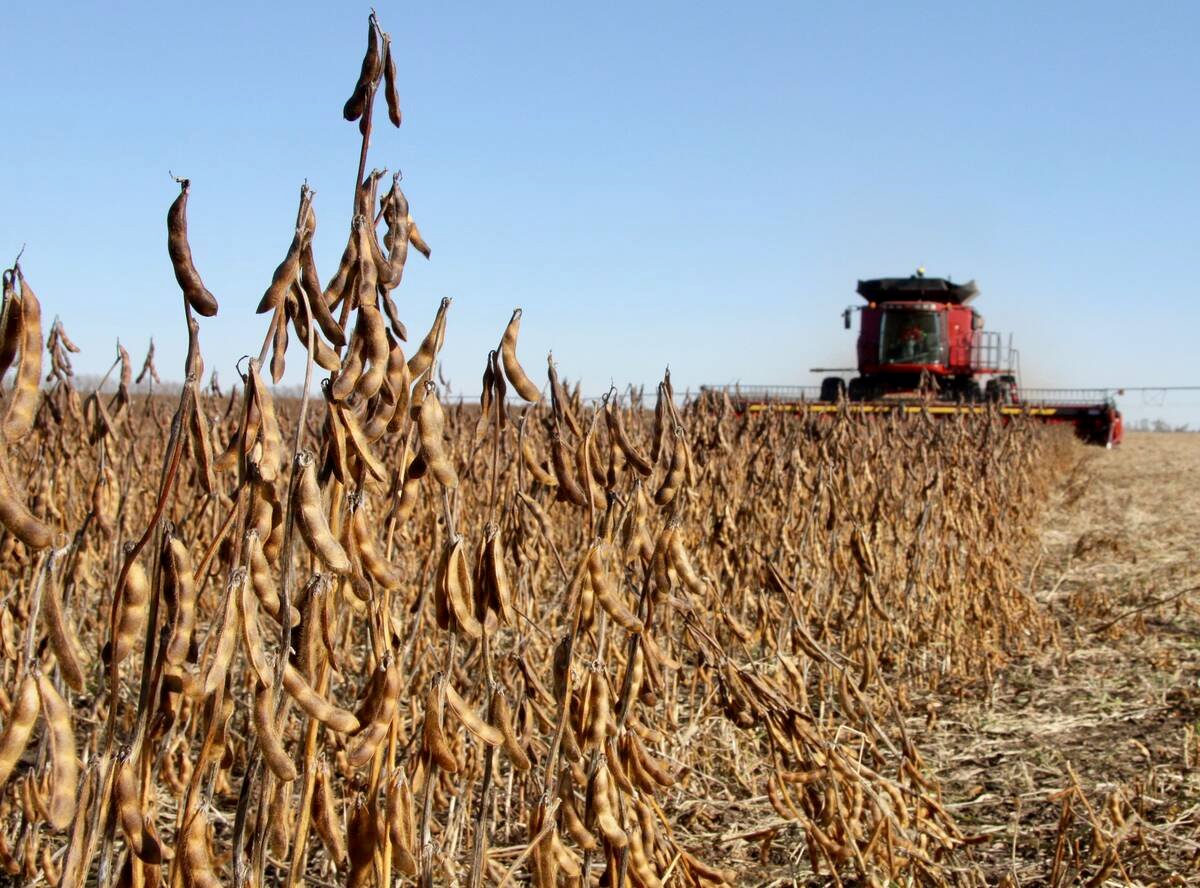VIRDEN, Man. – A mixed bag of hog views were submitted to the Manitoba Clean Environment Commission hearing in Virden last week.
About 25 people attended the meeting, which was part of the provincial government’s investigation into the sustainability of the hog
industry.
Local producers supported their operations, residents talked about how pig barns had ruined their quality of life and an economist from Brandon University explained his theory of how intensive livestock production is publicly subsidized by being allowed to wreak havoc on the environment without penalty.
Read Also

U.S. soybean crop was not all roses this year
The USDA is forecasting record U.S. soybean yields but for some growers it was a disastrous year due to excess moisture.
Kim and John Shepherd, who operate a 1,200 acre mixed farm in the Rural Municipality of Wallace, told the three commissioners that their life has been ruined since eight hog barns were built less than a kilometre from their home nine years ago.
Kim said she and her husband took their two 13-year-old boys to the Manitoba legislature six years ago in the hopes of airing their grievances to premier Gary Doer.
They were told the premier was busy and instead met with agriculture minister Rosann Wowchuk. Shepherd said the minister spoke with them for a few minutes and then rushed away to a meeting.
She said the Livestock Stewardship 2000 report, which Wowchuk had signed, contained a line stating the government had a responsibility to guide development and ensure that “industry growth does not occur at the expense of the environment or our quality of life.”
“I guess she meant her quality of life,” said Shepherd, adding the family feels like prisoners in their home because the smell doesn’t allow them to open their windows on hot summer nights.
“Personally, these factory hog operations have taken both my family’s clean environment and quality of life away,” she said.
“The flies that are breeding in these open pit lagoons, what pathogens or disease are they carrying to our farmyard a half mile away? We used to have flies but nothing compared to now.”
Irene Cousins, who also lives in the RM of Wallace, told how odour from a nearby hog operation ruined a much-anticipated summer visit by friends from Huddersfield, England.
“My husband and I spend mega hours getting the yard and garden looking its best. We were just finishing up when all of a sudden this horrible, indescribable smell invaded us, carried along by the northwest wind.”
Brandon University associate professor Joe Dolecki, who is an expert on environmental economics and environmental law, said intensive hog operations are heavy industry masquerading as agriculture.
Dolecki, who along with his wife and daughter operates a small mixed farm on a quarter section near Brandon, called for the immediate development of exit strategies for large-scale hog producers and a decommissioning strategy for the entire industry.
“It is my submission that the hog industry in Manitoba represents a classic example of the socialization of costs and the privatization of benefits approach to economic development,” he said. “It is neither economically viable nor environmentally sustainable.”
Zac Penner, who represented Aberdeen Farms near Kola, Man., said the mixed grain and hog operation that diversified into pork production in the mid-1990s after the Crow Benefit was removed has supported four generations of his family.
“The fifth generation is following close behind. We certainly hope that they will be able to continue if they choose to do so in the future,” he said.
Half of the 6,000-sow operation’s annual production of 140,000 weanlings is exported to the United States and the rest are fed nearby. So far, it has created 30 jobs in the tiny community of 100 people near the Saskatchewan border. Purchases of feed and supplies are worth $5 million a year to the area, he added.
The local feed mill has also expanded, providing another 20 jobs, and the local school, once threatened with closure, has since expanded twice.
Soil testing has shown that the farm’s land is deficient in phosphorus, he said, and application of liquid manure has increased soil organic matter and yields.
“Not only is it rich in nitrogen and phosphorus, it also contains vital nutrients such as potassium, sodium and calcium. All of these nutrients are important for producing a high-grade crop,” he said.
“One of our biggest concerns is water. We take every precaution to ensure there is no contamination of surface or ground water. We prefer to use manure as fertilizer because of its ability to adhere to the soil.”
Penner said the moratorium on hog expansion in the province has led to the industry being declared guilty until proven innocent in the court of public opinion.
“We believe that the Manitoba government should be as concerned with the practices of waste disposal from our cities and other large populations which reside near waterways to ensure that waterways are not polluted,” he said.
“The public now has the impression that the hog industry is the main contributing factor, when in fact there are many large and small offenders and no action appears to be taken against them.”














